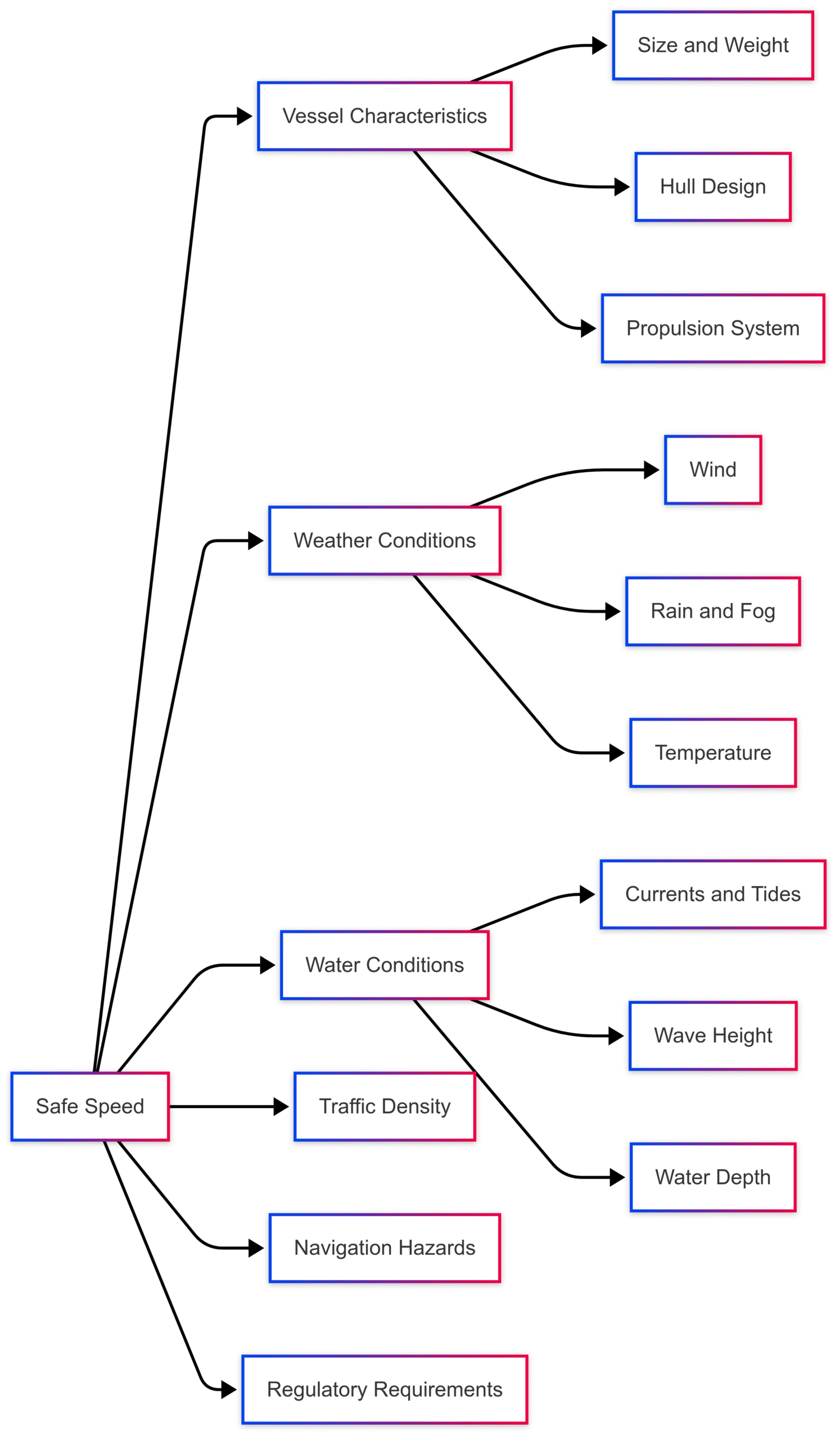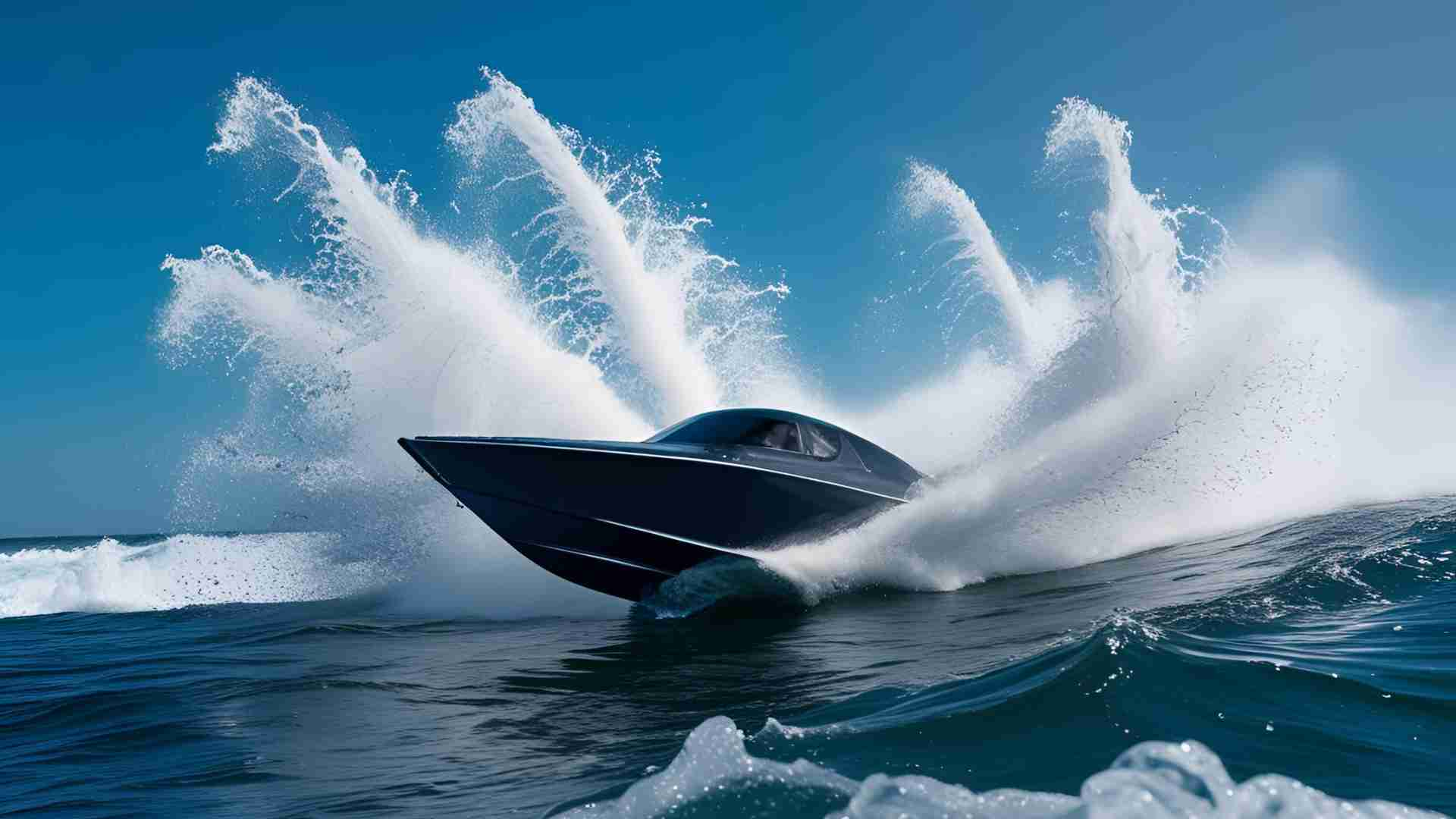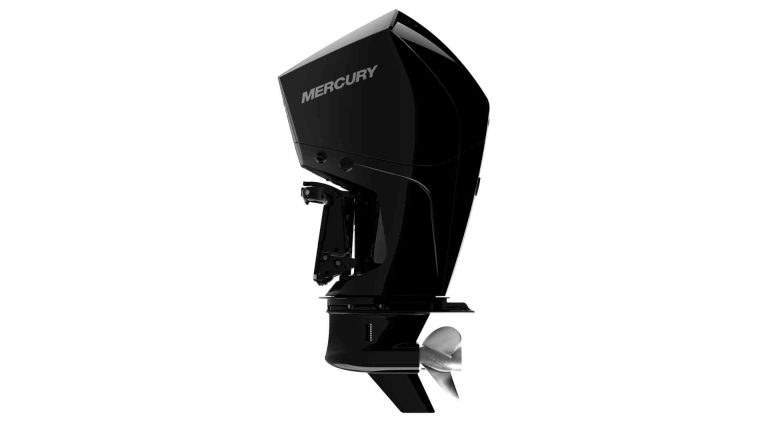What Is a Safe Speed?
Learn what determines a safe speed for your boat, including vessel characteristics, weather, traffic density, and regulations for safe boating.
Boating is an exhilarating way to explore waterways, whether for leisure, fishing, or adventure. However, the thrill of cruising comes with the responsibility of ensuring safety for yourself, your passengers, and others sharing the water. A critical aspect of safe boating is operating your vessel at a speed that allows you to maintain control, avoid collisions, and respond to hazards effectively. But what exactly determines a safe speed for your boat? This comprehensive guide explores the key factors influencing safe boat speeds, offering practical insights, checklists, and tools to ensure a secure and enjoyable boating experience.
Understanding the Concept of Safe Speed
Safe speed is defined as the maximum speed at which a boat operator can maintain proper control and take effective action to avoid collisions or stop within a safe distance, given the prevailing conditions. It’s not about pushing your vessel to its top speed but about balancing speed with safety, considering both internal factors (related to your boat) and external factors (environmental and regulatory conditions). Operating at a safe speed minimizes risks to your vessel, its occupants, and the surrounding environment, including other boats, wildlife, and shorelines.
This article delves into the critical elements that determine a safe speed, including vessel characteristics, weather and water conditions, traffic density, navigation challenges, and regulatory requirements. By understanding and applying these factors, you can navigate confidently and responsibly.
Key Factors in Determining Safe Speed
Determining a safe speed requires a holistic assessment of multiple variables. Below, we outline the primary factors that every boater should consider.
1. Vessel Characteristics
The type, size, and design of your boat significantly influence its safe operating speed. Different vessels have unique handling characteristics, maneuverability, and response times, which impact how they perform at various speeds.
- Size and Weight: Larger boats, such as yachts or cabin cruisers, require more power to achieve higher speeds and have longer stopping distances and larger turning radii. For example, a 40-foot yacht may need significantly more time and space to maneuver than a 16-foot speedboat. Smaller boats, while more agile, may become unstable at high speeds, especially in rough conditions.
- Hull Design: The hull shape affects maneuverability and stability. Planing hulls, common in speedboats, generate lift to achieve higher speeds but may lose control at low speeds in choppy waters. Deep V hulls excel in high-speed turns but may be less responsive at slower speeds. Displacement hulls, found in larger vessels, prioritize stability but limit top-end speed.
- Propulsion System: The type of propulsion—whether outboard, inboard, diesel, or electric—affects acceleration and response time. For instance, high-torque engines provide quicker acceleration, while larger propellers with higher pitch can increase speed but may reduce maneuverability.
- Maneuverability: A boat’s turning ability and stopping distance are critical. For example, a vessel with a larger rudder may respond more slowly but provide precise control, while smaller boats with thrust vectoring systems can execute quick maneuvers.
Table 1: Impact of Vessel Characteristics on Safe Speed
| Characteristic | Impact on Safe Speed |
|---|---|
| Size and Weight | Larger boats need more space and time to stop or turn, requiring lower speeds in tight areas. |
| Hull Design | Planing hulls allow higher speeds but may be unstable in rough waters; displacement hulls limit speed. |
| Propulsion System | High-torque engines enable quick acceleration; propeller pitch affects speed and control. |
| Maneuverability | Boats with quick response times can handle higher speeds in open waters but need caution in crowded areas. |
2. Weather Conditions
Weather is a dynamic factor that can change rapidly on the water, directly impacting safe speed. Adverse weather conditions reduce visibility, affect vessel stability, and increase the risk of accidents.
- Wind: Strong winds can generate waves and swells, reducing maneuverability. For example, a 20-knot wind can create 3- to 5-foot waves, making high-speed operation dangerous for smaller vessels.
- Rain and Fog: Precipitation and fog reduce visibility, requiring slower speeds to maintain situational awareness. In dense fog, speeds may need to be reduced to near-idle to avoid collisions.
- Temperature Extremes: Extreme heat or cold can affect engine performance and crew comfort, indirectly influencing safe speed decisions.
Boaters can use weather forecasting tools like the PredictWind app or NOAA Weather Radio to anticipate conditions and adjust speeds accordingly. For example, if a squall is forecast, reducing speed proactively can prevent loss of control.
3. Water Conditions
The state of the water—currents, tides, wave height, and depth—plays a crucial role in determining safe speed.
- Currents and Tides: Strong tidal currents or river flows can affect steering and stopping ability. For instance, navigating against a 5-knot current may require higher engine power, but excessive speed can compromise control.
- Wave Height and Frequency: Rough seas with high waves demand slower speeds to maintain stability. A boat hitting waves head-on at high speed risks capsizing or damage.
- Water Depth: Shallow waters increase the risk of running aground, especially at high speeds. Boaters should consult nautical charts and depth finders to adjust speed in shallow areas.
Chart: Factors Influencing Safe Speed

4. Traffic Density
Waterways can be as busy as highways, especially in popular boating areas like marinas, channels, or recreational hotspots. High traffic density requires reduced speeds to avoid collisions and maintain safe distances.
- Proximity to Other Vessels: In crowded areas, such as near docks or during regattas, slow speeds (e.g., 5-10 knots) allow for quick reactions to other boats’ movements.
- Type of Vessels: The presence of larger commercial vessels, like ferries or cargo ships, necessitates extra caution due to their limited maneuverability and large wakes.
- Navigation Lights: At night, proper use of navigation lights signals your position and intentions, allowing other boaters to adjust their speed and course.
5. Navigation Hazards
Navigational hazards, such as rocks, shoals, buoys, or submerged objects, require careful speed management.
- Proximity to Hazards: Reduce speed when approaching known hazards, using charts and GPS to identify risks.
- Nighttime Navigation: Darkness reduces visibility of hazards, making slower speeds essential. For example, a safe speed at night may be 50% lower than during daylight in the same area.
- Radar Limitations: If relying on radar, account for its limitations, such as blind spots or delayed updates, and adjust speed to compensate.
6. Regulatory Requirements
Local and federal boating regulations set speed limits and no-wake zones to ensure safety and protect the environment. For example, Florida enforces speed limits of 25-35 MPH in certain areas and mandates no-wake zones near docks, marinas, or environmentally sensitive areas.
- Posted Speed Limits: Always adhere to posted signs indicating maximum speeds.
- No-Wake Zones: Operate at idle speed to minimize wake, reducing erosion and damage to other vessels or shorelines.
- Compliance: Failure to follow regulations can result in fines or suspension of boating privileges, as enforced by agencies like the U.S. Coast Guard or state wildlife commissions.
Table 2: Common Speed Regulations by Area
| Area Type | Typical Speed Limit | Purpose |
|---|---|---|
| Open Water | 25-35 MPH | Balances speed with safety in less congested areas. |
| Near Docks/Marinas | Idle/No-Wake | Prevents damage to docked vessels and shorelines. |
| Environmentally Sensitive | Idle/No-Wake | Protects wildlife habitats and reduces erosion. |
| High-Traffic Channels | 5-10 MPH | Reduces collision risk in busy areas. |
Practical Checklist for Determining Safe Speed
To simplify the process of determining a safe speed, use this checklist before and during your boating trip:
- Assess Vessel Characteristics:
- Confirm your boat’s size, weight, and hull type.
- Test maneuverability at different speeds in a safe area.
- Check engine and propeller performance.
- Evaluate Weather Conditions:
- Monitor wind speed, wave height, and visibility using apps or weather radios.
- Adjust speed for adverse conditions like fog or storms.
- Check Water Conditions:
- Review tidal charts and current forecasts.
- Use depth finders to avoid shallow areas.
- Monitor Traffic Density:
- Reduce speed in crowded areas or near commercial vessels.
- Use navigation lights and sound signals as needed.
- Identify Navigation Hazards:
- Consult nautical charts for rocks, shoals, or buoys.
- Slow down in unfamiliar or poorly lit areas.
- Adhere to Regulations:
- Check for posted speed limits and no-wake zones.
- Contact local boating authorities for area-specific rules.
Safety Equipment for Optimal Control
Equipping your boat with proper safety gear enhances your ability to maintain a safe speed and respond to emergencies. Federal regulations, enforced by the U.S. Coast Guard, mandate specific equipment based on vessel size and type.
- Personal Flotation Devices (PFDs): Every passenger must have a properly fitted life jacket. Types include offshore life jackets, near-shore vests, and throwable devices. For example, a Type I offshore life jacket is ideal for open water, providing maximum buoyancy.
- Navigation Lights: Required for nighttime operation, these lights (red/green bow lights, white stern light) signal your position and direction.
- Engine Cut-Off Devices: Lanyard or electronic kill switches stop the engine if the operator is ejected, preventing runaway boats.
- Sound-Producing Devices: Whistles or horns are essential for signaling in low-visibility conditions or high-traffic areas.
Table 3: Essential Safety Equipment
| Equipment | Purpose | Legal Requirement |
|---|---|---|
| Personal Flotation Devices | Keeps passengers afloat in emergencies. | One per person, readily accessible. |
| Navigation Lights | Signals position and direction at night or in low visibility. | Required for vessels over 16 feet at night. |
| Engine Cut-Off Device | Stops engine if operator is ejected. | Mandatory for certain vessels under 26 feet. |
| Sound-Producing Device | Alerts other vessels in fog or crowded areas. | Required for all vessels. |
Recognizing Signs of Unsafe Speed
Operating at an unsafe speed compromises control, increases collision risk, and harms the environment. Watch for these indicators:
- Excessive Wake: A large wake can damage other vessels, docks, or shorelines, indicating a need to slow down.
- Inability to Stop or Turn: If your boat cannot stop or maneuver within a safe distance, your speed is too high.
- Instability: Excessive rocking or difficulty maintaining course suggests the speed is unsafe for current conditions.
- Environmental Impact: High speeds can resuspend sediment, harm wildlife, or increase erosion in sensitive areas.
Environmental Considerations
Your boat’s speed affects not only safety but also the marine environment. Excessive speed creates larger wakes, which can:
- Erode shorelines and damage docks.
- Disturb fish habitats and wildlife.
- Increase fuel consumption, contributing to pollution.
In no-wake zones, operate at idle speed to minimize environmental impact. For example, a 20-foot boat at 30 MPH can produce a wake that travels hundreds of feet, affecting smaller vessels and shorelines.
Boating Safety Education
Formal boating education equips you with the knowledge to determine safe speeds and handle real-world scenarios. Courses from organizations like Boat Ed, the U.S. Coast Guard, or BoatUS cover:
- Navigation rules and markers.
- Weather interpretation and emergency procedures.
- Safe speed determination and vessel handling.
Simulation-based training, such as the Boating Skills Virtual Trainer™, allows you to practice speed control in virtual environments, enhancing your skills without real-world risks.
Navigating Common Scenarios
Approaching Docks and Marinas
Docking requires precise speed control, typically at idle or no-wake speed (1-3 knots). Approach at a 45° angle in calm conditions, adjusting for wind or current. Larger boats may need slower speeds due to their momentum.
Handling Waves and Wakes
When crossing wakes or waves, approach at a slight angle (10-20°) to maintain stability. Reduce speed to avoid slamming into waves, which can destabilize smaller vessels.
Interacting with Enforcement Officers
Waterway patrols enforce speed limits and safety regulations. Always comply with officers’ instructions, carry required safety equipment, and maintain proof of boating education if required.
Frequently Asked Questions
How do you know when you’re operating at a safe speed?
What is the most important factor in determining safe speed?
How does vessel size affect safe speed?
Why is visibility crucial for safe speed?
What are no-wake zones?
Final Thoughts
Determining a safe speed for your boat is a dynamic process that requires constant assessment of your vessel’s characteristics, environmental conditions, and regulatory requirements. By prioritizing safety, equipping your boat with proper gear, and staying educated, you can enjoy the thrill of boating while protecting yourself, others, and the marine environment. Whether you’re navigating open waters or docking at a marina, always adjust your speed to match the conditions, ensuring a safe and responsible boating experience.
Happy Boating!
Share What determines if a speed is safe for your boat? with your friends and leave a comment below with your thoughts.
Read Water Pressure Gauge Role in Monitoring Pressure Systems until we meet in the next article.






